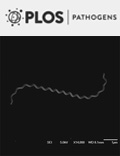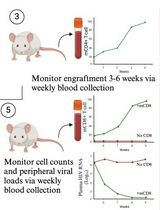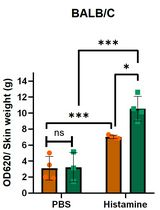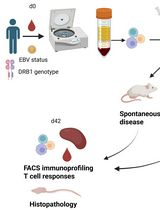- EN - English
- CN - 中文
H1N1 Virus Production and Infection
H1N1病毒的制备和感染
发布: 2018年10月20日第8卷第20期 DOI: 10.21769/BioProtoc.3062 浏览次数: 7309
评审: Alka MehraMigla MiskinyteAnonymous reviewer(s)
Abstract
Influenza A virus is a member of orthomyxoviridae family causing wide-spread infections in human respiratory tract. Mouse infection model is widely used in antiviral research and pathogenesis study against influenza A virus. Here, we report a protocol in infected mice with different virus doses and strains to explore how an inhibitor of lysine-specific demethylase (LSD1) impacts disease progression.
Keywords: Influenza A virus (A型流感病毒)Background
Influenza A virus, a member of the family Orthomyxoviridae, is a negative-sense RNA virus with eight segmented genomes of single-stranded viral RNAs (vRNAs) that encode more than 10 proteins. During the past 100 years, outbreaks of influenza-virus strains regularly appeared in human populations, including “Spanish flu” in 1918 caused by the H1N1 subtype, “Asian flu” in 1957 by H2N2, “Hong Kong flu” in 1968 by H3N2, “Russian flu” in 1977 by H1N1, and “swine flu” in 2009 by H1N1 (Smith et al., 2009; Lim and Mahmood, 2011; Kumar et al., 2018). Seasonal influenza A viruses also circulate worldwide, spread easily from person to person, and result in the hospitalization of three to five million individuals worldwide annually (Molinari et al., 2007). The seasonal influenza infections are responsible for 290,000-650,000 deaths annually, mainly among young children, elderly adults, and critically ill patients (Kumar et al., 2018).
Animal models are used in influenza virus research not only to elucidate the viral and host factors that affect disease outcomes and spread among susceptible hosts but also to evaluate interventions designed to prevent or reduce influenza morbidity and mortality (Thangavel and Bouvier, 2014). In this paper, we use two strains of influenza A virus, A/WSN/33(H1N1) (WSN) which is a commonly-used lab strain, and A/Sichuan/01/2009 (SC09) which is a natural isolate to infect mice. This experiment aims to explore how Trans-2-phenylcyclopropylamine hydrochloride (TCP) (a chemical inhibitor against LSD1 [Shan et al., 2017]) impacts disease progress. Moreover, we applied different doses of virus to infect the mice for different purposes to reveal the function of TCP.
Materials and Reagents
- 1.5 ml Eppendorf tubes (Eppendorf)
- 10 µl, 200 µl, and 1 ml pipette tips (FUKAEKASEI and WATSON, catalog number: 1201-705C )
- 24-well plates (Corning, catalog number: 3526 )
- 6-well plates(Corning, catalog number: 353046 )
- 6 cm dish (Thermo Fisher Scientific, Thermo ScientificTM, catalog number: 150288 )
- Syringes
- 75 cm flask (T75 flask) (Corning, catalog number: 430641U )
- 0.22 μm filters (Axiva Sichem Biotech, catalog number: SFPV13 R )
- Pencil
- BALB/c mice (6-8W, female)
- 293T cells (ATCC, catalog number: CRL-3216 )
- MDCK cells (ATCC, catalog number: CCL-34 )
- A/WSN/33(H1N1) (WSN) virus (Hoffmann et al., 2000)
- A/Sichuan/1/2009 (H1N1) (SC09) (Kindly provided by Prof. Yuelong Shu in China CDC)
- TCP (Santa Cruz Biotechnology, catalog number: sc-208452 )
- 1x PBS (Lonza, catalog number: 17-516Q )
- Isoflurane (Abbott, catalog number: 5260-04-05)
- Picric acid (Fisher Scientific, catalog number: 13205 ) (Used for labeling the mice)
- DMEM (Thermo Fisher Scientific, GibcoTM, catalog number: 11965092 )
- Paraformaldehyde (Sigma-Aldrich, catalog number: P6148 )
- True Blue substrate (KPL, catalog number: 50-78-02 )
- anti-nucleoprotein antibody (Antibody Research Centre, Shanghai Institute of Biological Science)
- Anti-rabbit IgG secondary antibody (Antibody Research Centre, Shanghai Institute of Biological Science)
- Avicel (FMC BioPolymer, catalog number: CL 611 )
- Bovine serum albumin (BSA) (Sigma-Aldrich, catalog number: A3912 )
- 2x DMEM (Thermo Fisher Scientific, catalog number: 12800017 )
- Trypsin (TPCK) (Sigma-Aldrich, catalog number: 4370285 )
- Fetal bovine serum heat inactivated (FBS) (Sigma-Aldrich, catalog number: F9665 )
- BactoTM agar (BD, BactoTM, catalog number: 214010 )
- 18 MΩ H2O
- Overlay medium (DMEM + 2% FBS + 0.9% BactoTM-Agar)
- Infection medium (DMEM + 1 μg/ml TPCK)
- Trans-2-phenylcyclopropylamine hydrochloride (TCP) (1 mg/ml) (see Recipes)
- 2.4% Avicel (see Recipes)
- 6% BSA (see Recipes)
- Overlay medium (see Recipes)
Equipment
- Pipettes (Thermo Fisher Scientific, catalog number: 1156-6963 )
- Dissection equipment (forceps, tweezers, scissors)
- Anesthesia machine (Parkland Scientific, catalog number: V3000PK )
- Eppendorf centrifuge
- Class II biological safety hood (Thermo Fisher Scientific)
- Incubator
- Freezer (4 °C, -20 °C and -80 °C)
- Ultraviolet (UV) light
Software
- GraphPad Prism (https://www.graphpad.com/)
- Statistical Product and Service Solutions (SPSS) (https://www.ibm.com/analytics/data-science/predictive-analytics/spss-statistical-software)
Procedure
文章信息
版权信息
© 2018 The Authors; exclusive licensee Bio-protocol LLC.
如何引用
Zhao, B., Shan, J., Xiong, R., Xu, K. and Li, B. (2018). H1N1 Virus Production and Infection. Bio-protocol 8(20): e3062. DOI: 10.21769/BioProtoc.3062.
分类
微生物学 > 体内实验模型 > 病毒
免疫学 > 动物模型 > 小鼠
您对这篇实验方法有问题吗?
在此处发布您的问题,我们将邀请本文作者来回答。同时,我们会将您的问题发布到Bio-protocol Exchange,以便寻求社区成员的帮助。
Share
Bluesky
X
Copy link













